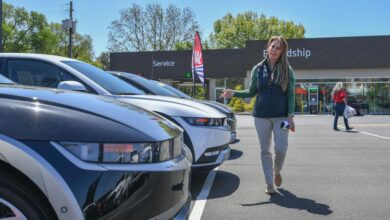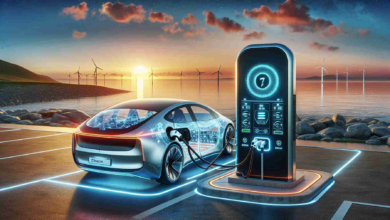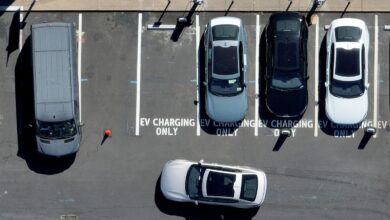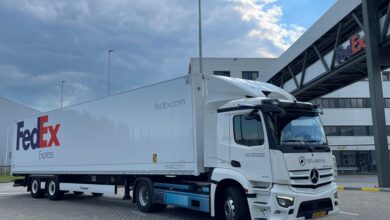Battery EVs Might Not Be The Future Of Transport In China After All
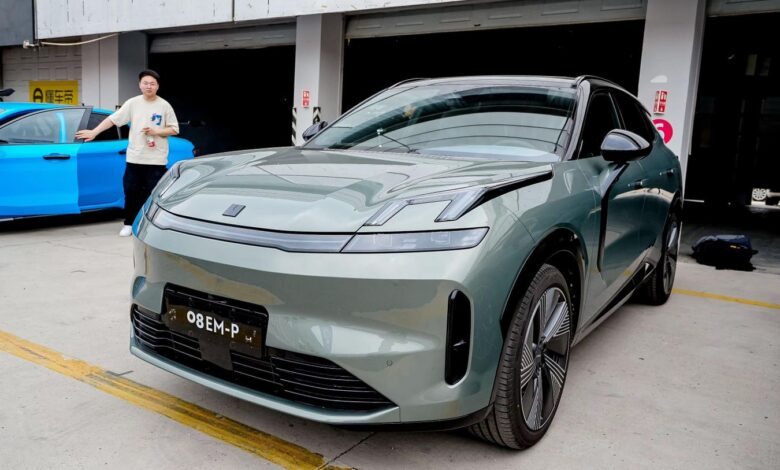
China hit an important milestone recently: over 50% of cars sold in the country were “new energy vehicles” in the first half of April 2024. But while this is a laudable result and great news for both China’s and global emissions, it’s not all it seems. The great leap in sales wasn’t due to bumper shipments of battery electric vehicles (BEVs) but plug-in hybrids (PHEVs). Could China’s much-vaunted BEV market be switching to PHEVs instead, giving the internal combustion engine (ICE) a new lease of life?
The Lynk & Co 08 EM-P is a PHEV with a battery-only range of 153 miles.
At the Auto China 2024 show in Beijing, I asked this question to Madam Ruiping Wang, CEO Aurobay, which is the ICE-producing wing of Chinese automaking giant Geely and one of China’s leading suppliers in this area. “Most of the media attention has been on BEVs for the last few years,” she says. “But there has been a major change in the market recently. At the end of 2023, BEVs made up 23%, pure hybrids (HEVs) 4%, and PHEVs 11% of the Chinese market. But in April this year, BEVs are down to 21%, HEVs still at 4%, and PHEVs have gone up to 15%, meaning hybrids are now 19% of the market.” Madam Wang expects the HEV and PHEV market combined to outpace BEVs by the end of the year.
Why Are Chinese Drivers Turning to PHEVs?
I asked her why she thought this was happening. “Around 80% of Chinese families only own one car,” she says. “They need that car to drive them for any journey, including long distances. In the city, a BEV is perfect, but for longer distances it’s not so good.” China is a huge country, spanning 5,000km (3,100 miles) from East to West and 5,500km (3,400 miles) from North to South. It can take hours just to get across its biggest cities like Beijing and Shanghai. “Charging is not as popular as going to a gas station to fill up, because it takes longer.”
Madam Wang argues that PHEVs provide some of the benefits of BEVs without these downsides. “The PHEV can also be higher performance than a non-hybrid internal combustion car, like a BEV,” she says. “Drivers can have an experience like a BEV.” I got to put this to the test with some of Geely’s PHEVs around a racetrack in Beijing, including a Lynk & Co 07 EM-P. This car offers 161hp from its petrol motor but 375hp including its electric motors. Although the 07 EM-P weighs over 1,915kg, it feels very quick in a straight line.
The Lynk & Co 07 EM-P PHEV performs well on the track, until the battery runs out.
It was a decent performer on the track, too. However, you only get the full benefit of all the power while the 18.97kWh battery is still charged. Once you have used that up the acceleration is noticeably reduced. The average Chinese PHEV buyer is not going to be ragging their car for all it’s worth, particularly not in the heavy traffic on public roads in Beijing. But for them, there is another benefit from the PHEV that has only arrived with the latest versions and helps explain their resurgence in popularity.
Much Better PHEV Electric Range
The latest PHEVs now entering the market in China are a sea change from the first generation of this technology, which promised just 20-30 miles of battery-only driving (while usually delivering half that). This often wasn’t even enough for a full commute. Today’s models offer many times that range. Geely’s brand Link & Co has just launched an SUV called the 08 that comes with a whopping 40kWh battery, which can provide 245km (153 miles) of pure-battery range. This generation of PHEV usually offers fast DC charging as well, so it’s worth plugging them in during a long journey if you can find a convenient spot. The previous generation only offered AC charging, which took hours to recharge the battery, meaning it was only worth doing at home or at work.
In Europe and the US, PHEVs have come under fire for not living up to their theoretical economy. This is in large part because they were being purchased as company cars due to tax incentives and then never actually plugged in for charging, defeating the point. This was also true in China before, thanks to the limitations of the first PHEVs. But Madam Wang reckons this is no longer the case with the new PHEV generation, and even if you don’t charge them, there is still some benefit.
“You get 40% better fuel consumption even if you don’t charge the latest PHEVs,” she claims. “But the cost gains of charging are obvious.” While a pure fossil fuel car in China might cost 0.7 RMB per mile (around 10 US cents per mile) to run, a PHEV running on its electric motor is more like 0.2 RMB per km (around 3 US cents per mile). “With a car like the Link & Co 08, you only need to charge it once a week, so along with the cost saving there is a lot of incentive to charge. Workplaces now have chargers too.”
The LEVC TX uses a range-extending fossil fuel motor that was manufactured by Aurobay until 2022.
Aurobay has also provided the fossil fuel motor for the iconic black London cab made by LEVC, another company owned by Geely (although production moved to Malaysia’s Proton in 2022). This isn’t a PHEV but a range extender EV (REEV). However, the use case concept is similar to a PHEV with a big battery. The LEVC taxi is meant to do most of its miles on battery power but has the fossil fuel engine available as a backup when that runs out and there’s no time to charge, or for when a long journey is requested such as a distant airport run.
Can PHEVs Provide BEV Benefits For Less Cost?
Alongside the flexibility benefits of the newer PHEVs, cost is a major factor in their reemerging success according to Madam Wang. “Batteries are still expensive,” she says. “If you can have half the battery size or less than an equivalent BEV, even with the added cost of the gas engine the overall vehicle price is lower. Customers can pay less and still drive like a BEV most of the time.”
Hybrids aren’t the only technology vying for a share of China’s new energy market. Aurobay still hasn’t discounted hydrogen or methanol and has produced both a hydrogen combustion engine and methanol motors. The latter are either dual-fuel (able to run on conventional fossil fuel or methanol) or pure methanol. Madam Wang said there were already 30,000 methanol-capable vehicles on Chinese roads, and Geely has recently announced Malaysia is its next target for the technology. Methanol can be produced greenly (although it isn’t always) and can provide a similar cost per km/mile as a BEV.
The Geely Emgrand M100 Hybrid is a PHEV combining methanol burning with an electric motor.
It’s worth bearing in mind that Madam Wang has worked for Geely’s powertrain unit almost since it began in 2010, becoming Aurobay in 2021, and clearly has a passion for internal combustion engines. BEV technology will also get better, and Geely has brands that are still resolutely battery-only such as Zeekr and Polestar, so the company is clearly not turning away from BEVs. Batteries are becoming cheaper and more energy dense, providing greater range for less money. Solid state batteries might also finally fulfil the revolution they have been promising for too many years.
But for now, China appears to be rethinking its rush towards pure battery electrification, and Europe and America might follow suit as their BEV market growth is slowing too. Just when we thought BEVs had won, the internal combustion engine is staging a comeback, even if it will probably be temporary in the long run.
